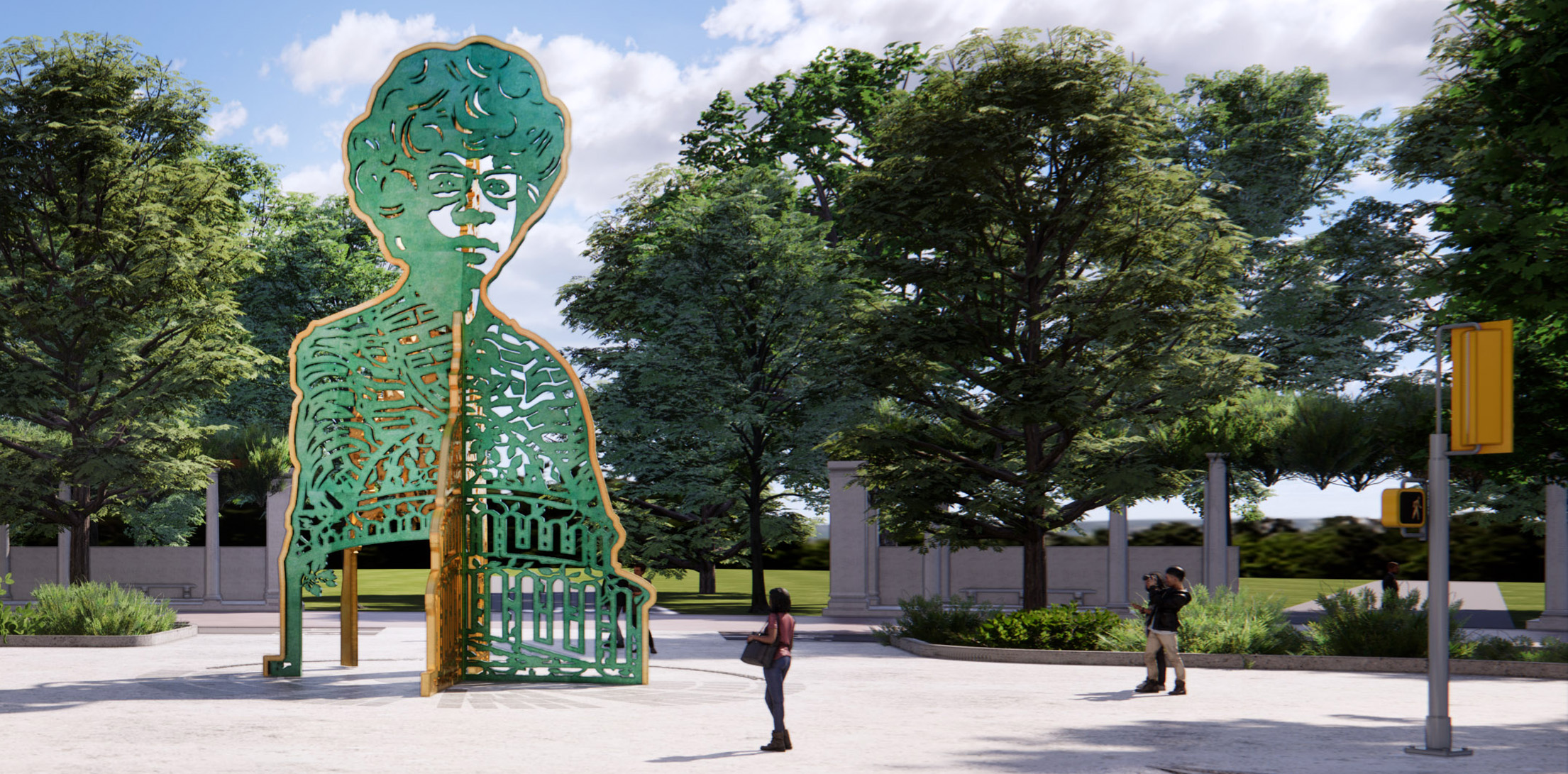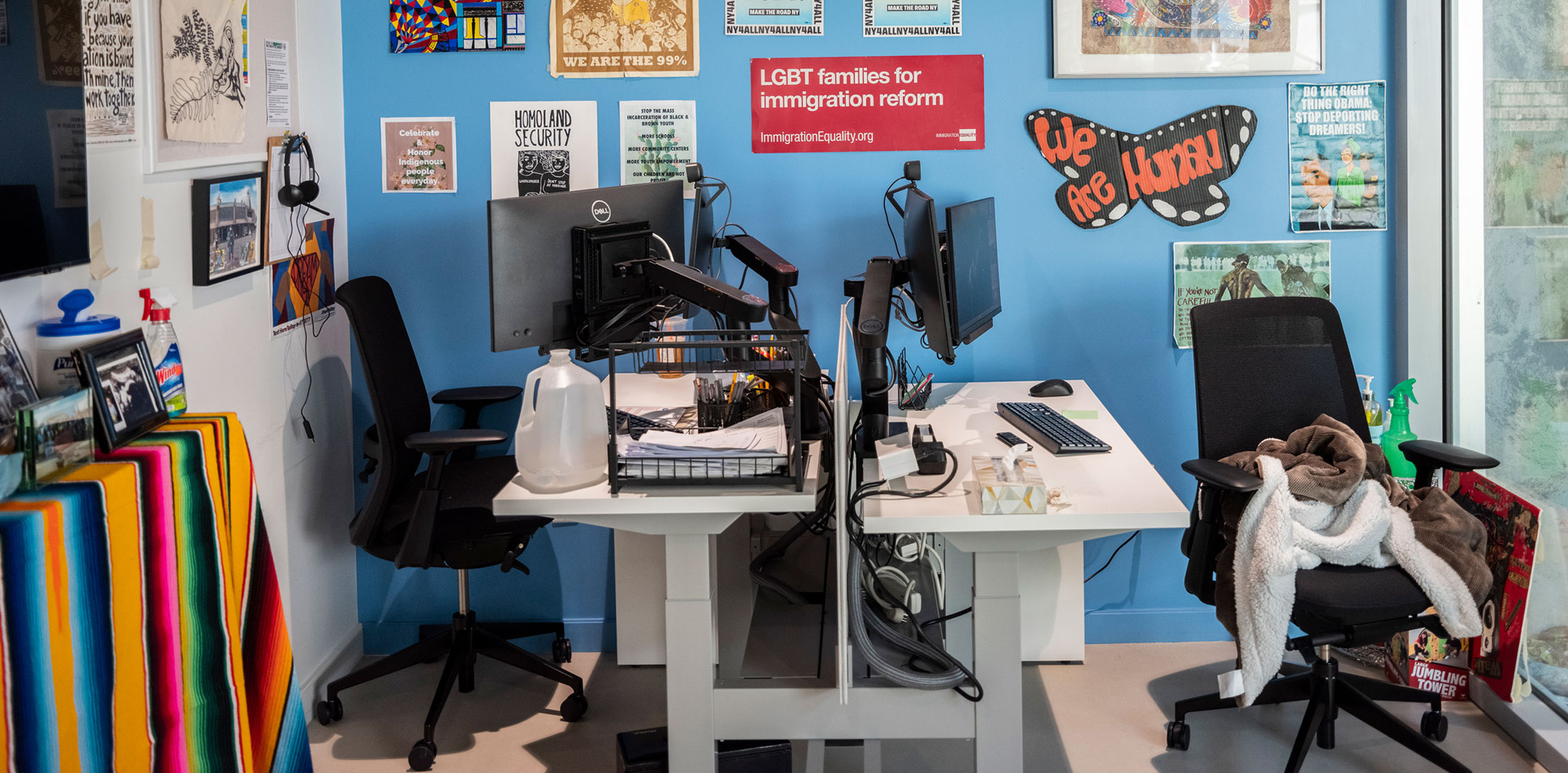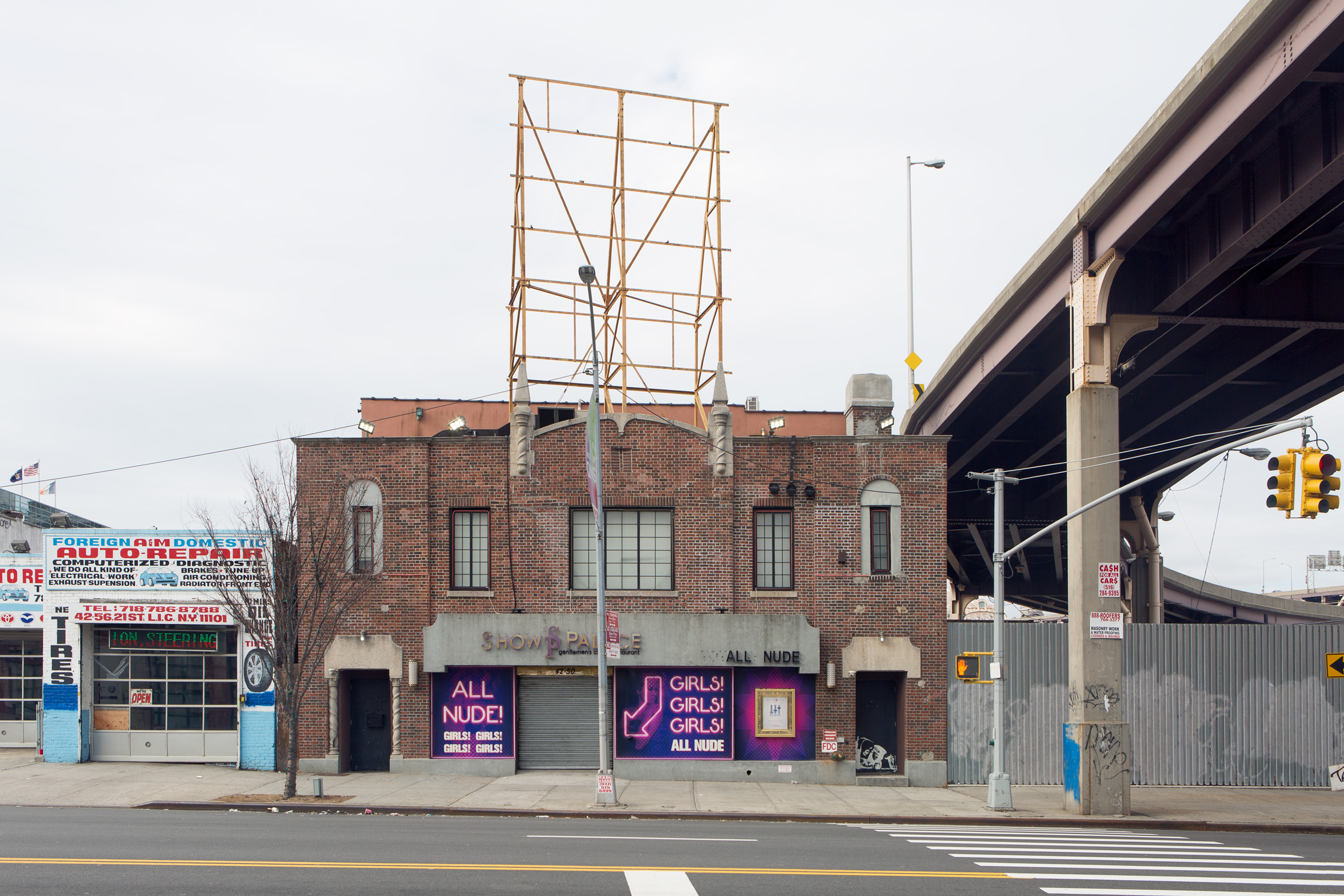
Chisholm Town
A larger than life figure is honored across a growing landscape of commemorative parks, buildings, and place names.
The Invisible Arch
Public art proposals are a highly contested terrain. But the processes for the commissions themselves escape scrutiny.
Queer Comfort
Plants in a Staten Island garden — and the communities that sustain them — bloom in genders beyond binaries.

Permanent Resident
The new Queens headquarters of Make the Road New York is designed as a beacon for its working-class, immigrant community. The story of the building closely tracks larger struggles to make a stable, secure home in the city.
The World is About to Turn
In the weekly Jericho Walk, New Sanctuary Coalition and allies confront a site of darkness and fear for many immigrants, and make sure that friends are not alone in their journey.
Seneca Village, Envisioned
No visual records remained after a thriving, majority Black village was cleared to make way for Central Park. A multidisciplinary team is using historical research, digital modeling, and informed speculation to return the community to our collective imagination.

Blank billboards speak to power struggles, policy gaps, and shifting priorities for New York City’s public realm.
Sign Off
